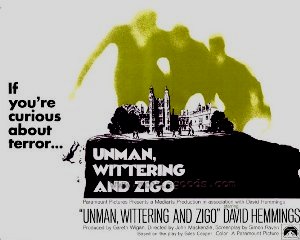 Yeah, but who will be playing Suzanne Pleshette?
Yeah, but who will be playing Suzanne Pleshette? The remake of Alfred Hitchcock's "The Birds" that Dave Kehr referred to on his blog several months ago is still active - unfortunately.
Yes, friends, Hollywood is still creatively bankrupt. Apparently, no one can think up original ideas anymore. And it's been asked before but here goes: If Hollywood is so bent on doing remakes, why doesn't it pursue older films that don't fully work, rather than those movies that do?
 And why does the place always tackle the classics?
And why does the place always tackle the classics?Anyway, checking out its status on IMDb, I learned that Naomi Watts is still the only star on board (in the Tippi Hedren role, natch) and that Martin Campbell is the latest director attached to it. Nothing on who will be playing the Rod Taylor, Suzanne Pleshette and Jessica Tandy roles, although I'm sure it doen't matter, given that the computer-generated avians will probably be the focus, getting preferential treatment.

But what caught my attention is that no fewer than six - count 'em - six writers are working on it. Six. The original needed only Evan Hunter. Six writers working on an adaptation of Daphne De Maurier's short story.
Why on earth would such miminalist material need six writers? Any one out there have any theories?
And wanna bet that De Maurier's short story will be barely recognizable?
Note in Passing: The original Hitchcock film airs on Turner Classics at 2 p.m. (est) on Sunday (October 26th).
(Artwork: The attack begins, Pleshette and Hendren in the original version of "The Birds," and Hedren in the throes of an attack)


































